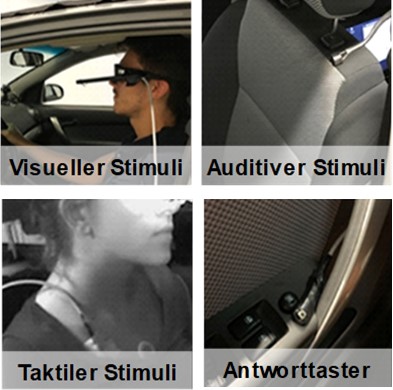
We use the detection response task in accordance with ISO 17488:2016 to measure performance-based mental strain and attention. This test is based on the assumption that cognitive stress from the work task causes mental strain in the individual, which in turn can be measured by a change in reaction times. In the detection response task developed by us at the IAD, the stimuli can be presented visually, auditorily and/or tactilely.
The participants have to respond to an unpredictable stimulus by pressing a button. The stimulus is presented for one second or until the test participant returns a response. The next stimuli are repeated randomly every three to five seconds. A valid response to a stimulus is given if the subject presses the button within 100 – 2500 ms after the stimulus begins. Early, unrealistic responses of less than 100 ms and responses after 2500 ms are not evaluated. If there is no response, this is coded as an error and is included in the calculation of the response rate.
Example application:
- The detection response task was used in the IAD driving simulator to assess the effects of non-driving related tasks during highly automated driving on the mental stress of drivers and their ability to take over again.
Detection Response Task while performing non-driving related activities during highly automated driving in the IAD driving simulator
If you would like to know whether the method is suitable for your application, you are welcome to contact us using the contact button on the right. Your enquiry will then be forwarded directly to our experts.



